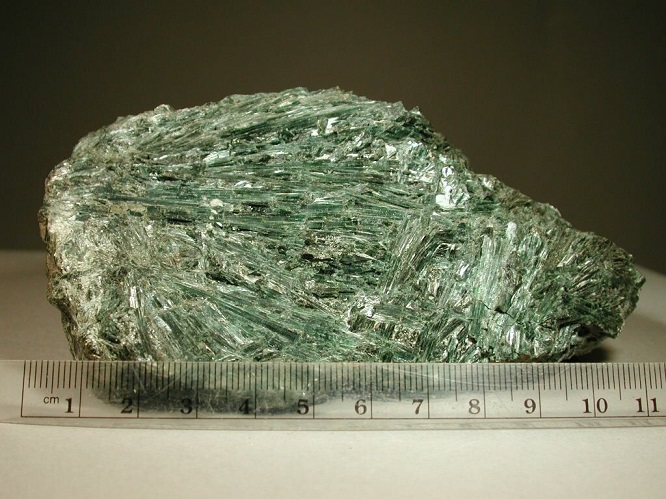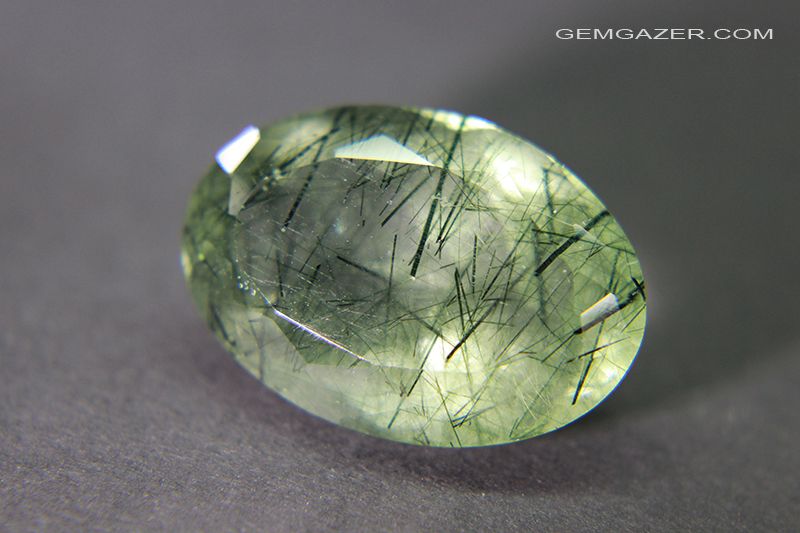Actinolite
- Jennifer Lince
- Jun 11, 2022
- 2 min read
Actinolite

IMG: Actinolite needles in Quartz
Actinolite was formed during the metamorphism of the sea floor which converted the original basaltic rocks to a greenschist which, subsequentially, was overprinted by blueschist mineralogy.
It was first recorded in 1794 by R.Kirwan, who named it after the Greek word ‘Aktis’ meaning ‘beam’ or ‘ray’, to describe the shape it forms in.
As a member of a series of stones containing varying amounts of iron and magnesium, Actinolites with more than 50% Iron (Fe) are very rare and the chief constituent of nephrite (jade).
It is possible to get Catseye actinolite which occurs when chatoyant material is cut.
As it is easy to cleave and hard to cut, it would make a poor stone of choice for jewellery although some specimens from Madagascar are clean and suitable for faceting.
Metaphysical Properties:
- Powerful heart stone
- Provides the emotional body with protection from negative energies.
- Provides aura with a protective shield that deflects negativity.
- Aids to release stress and weight we place on ourselves daily
- Helps pull emotions to the surface
- Aids with courage and Confidence to face uneasy emotions and find closure from them.
Ideal to wear at funerals, hospitals, work or family-related outings to protect from picking up negative energies that often occur in these settings.
Variation: Smaragdite (chrome-rich tremolite from Tanzania)
Identification
It crystallizes in the form of long blades (or needles) and is mainly found in a distinctive dark green colour, although can also be found in white, yellow, grey or black.
Transparent Actinolite (The gem like image below) is very rare and highly desired by collectors - this usually ends up cut and faceted into jewellery that has a high value.
It can also be found as an inclusion inside quartz (see the last 3 images in the gallery)
Countries it can be found
It’s a fairly common stone that can be found all over the world, although Brazil, Russia, Canada, China and the USA have an abundance of Actinolite.
Transparent Actinolite has, so far, only been found in Taiwan and China.
Rarity: Common
Transparent Actinolite and Actinolite in Quartz are very rare variations.
How to care for it
Generally, it's a fairly stable mineral and isn’t water-soluble so cleaning with a water gun and toothbrush or dental pick set to a very gentle pulse can be used. If there is Iron staining, use Iron-Out or something similar to remove it.
Scientific Information
Mohs hardness: 5.5
Formula : Ca2(Mg,Fe)5Si8O22(OH)2 (Calcium Magnesium Iron Silicate Hydroxide)
Etymology:
The name ‘actinolite’ is derived from the Greek word ‘aktis’ meaning ‘beam’ or ‘ray’, due to the minerals fibrous nature.
Fracture: Uneven, Often fibrous nature
Cleavage: 2 direction good
Crystallography: Monoclinic; bladed crystals, usually elongated; fibrous, columnar aggregates. Also massive, granular, often twinned
Refractive index: 1.619-1.644
Birefringence: 0.022-0.026
Luminescence: None (presence of Iron (Fe) prevents this)
Pleochroism: Yellow to Dark Green. Material is transparent to nearly opaque. α: pale yellow/ yellowish-green. β: pale yellow-green/green. γ: pale green/ deep greenish-blue.
Optics: α = 1.619-1.622; β = 1.632-1.634; γ = 1.642-1.644 (Tanzanian material). Biaxial (-); 2V = 78°.
Optic Sign: Biaxial
Lustre: Vitreous, sometimes dull
Specific Gravity: Usually 3.05; Tanzania: 3.03-3.07; Max.:3.44
Transparency: Translucent to transparent
Phenomena: Chatoyancy
Not sure what these words mean? Click here to see a post explaining them!
Sources:
Images found on google


















Comments